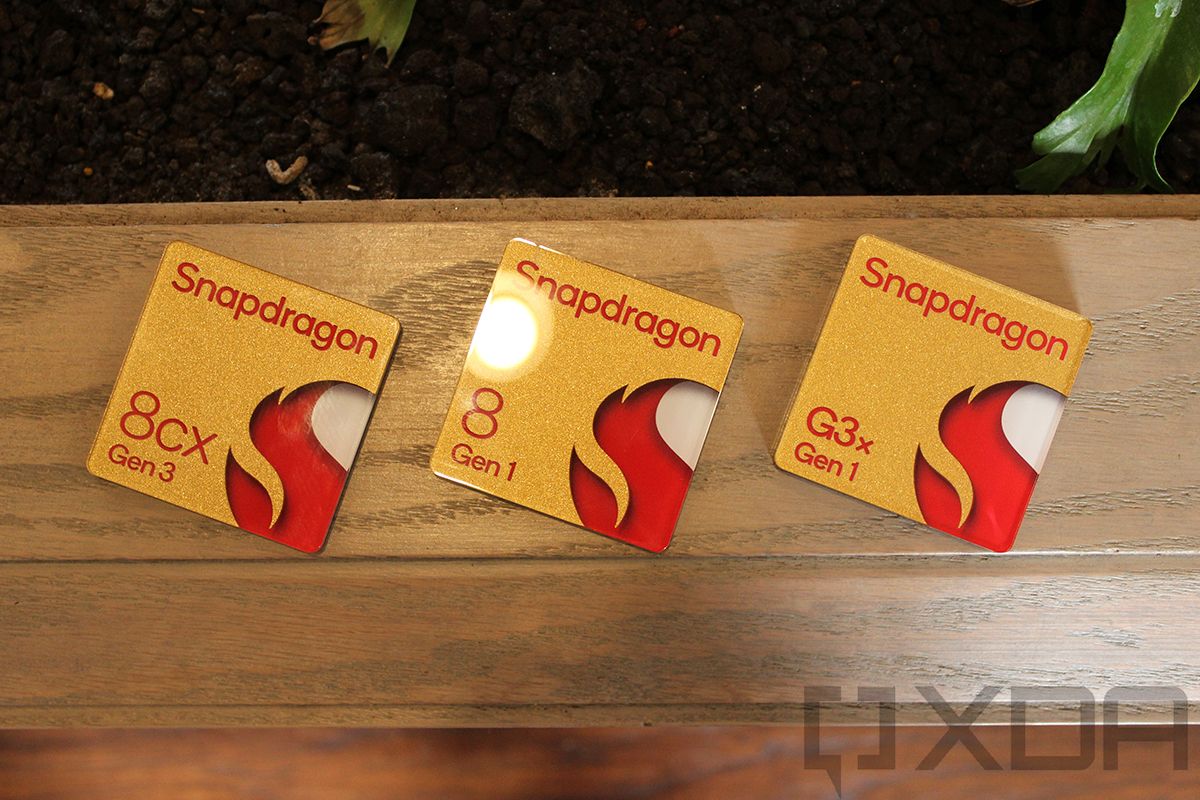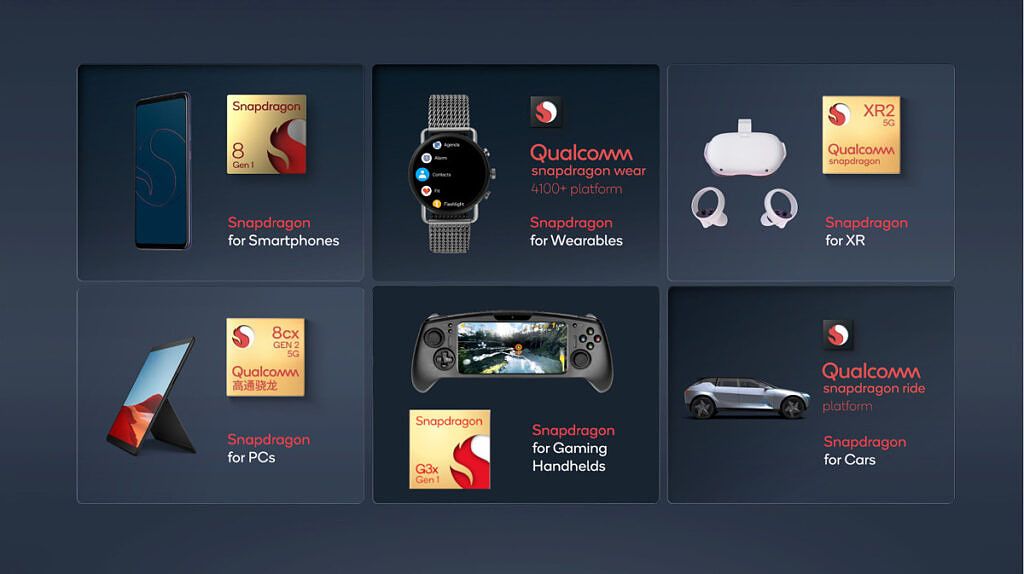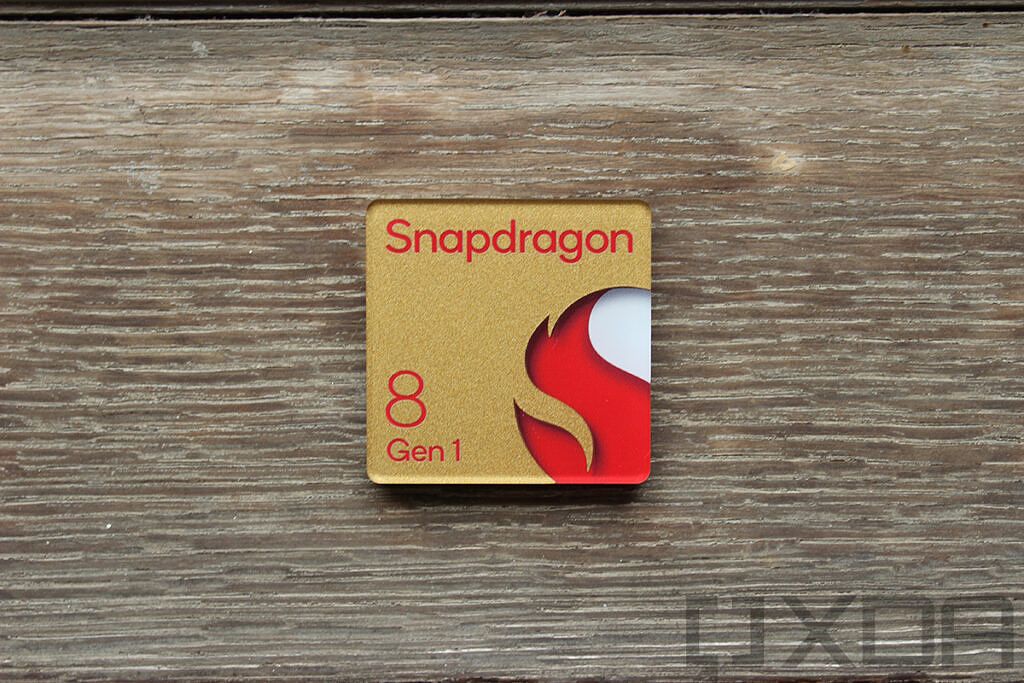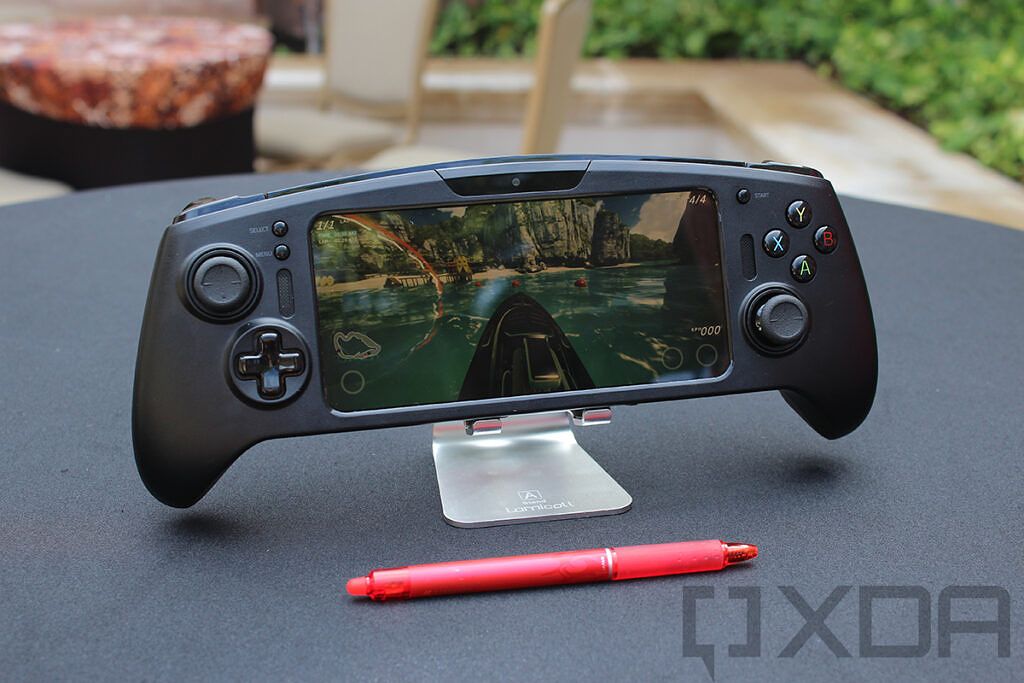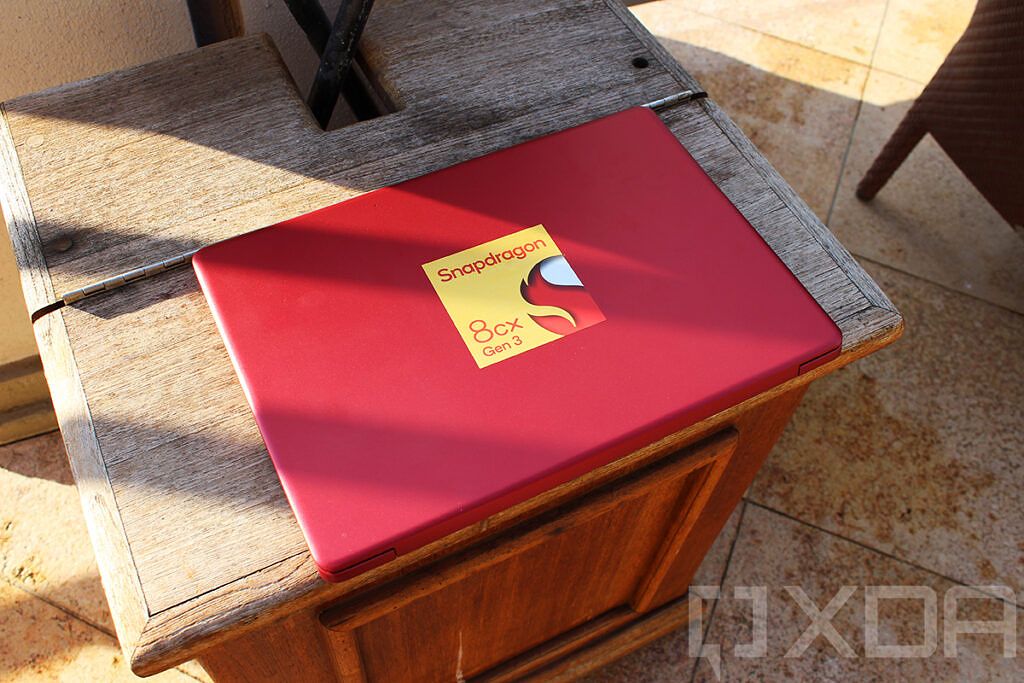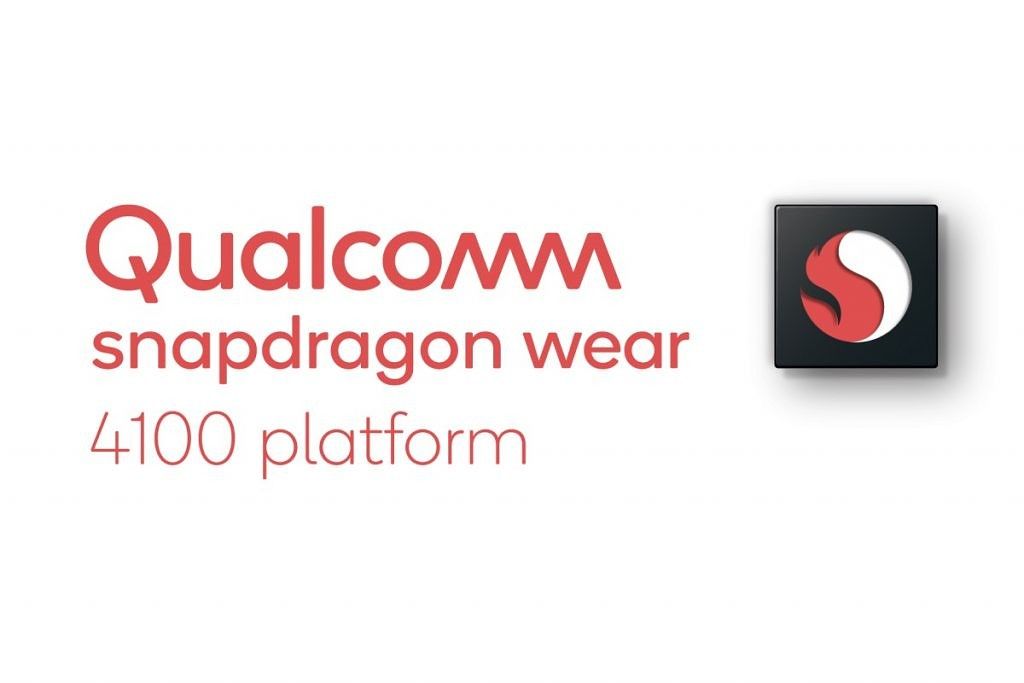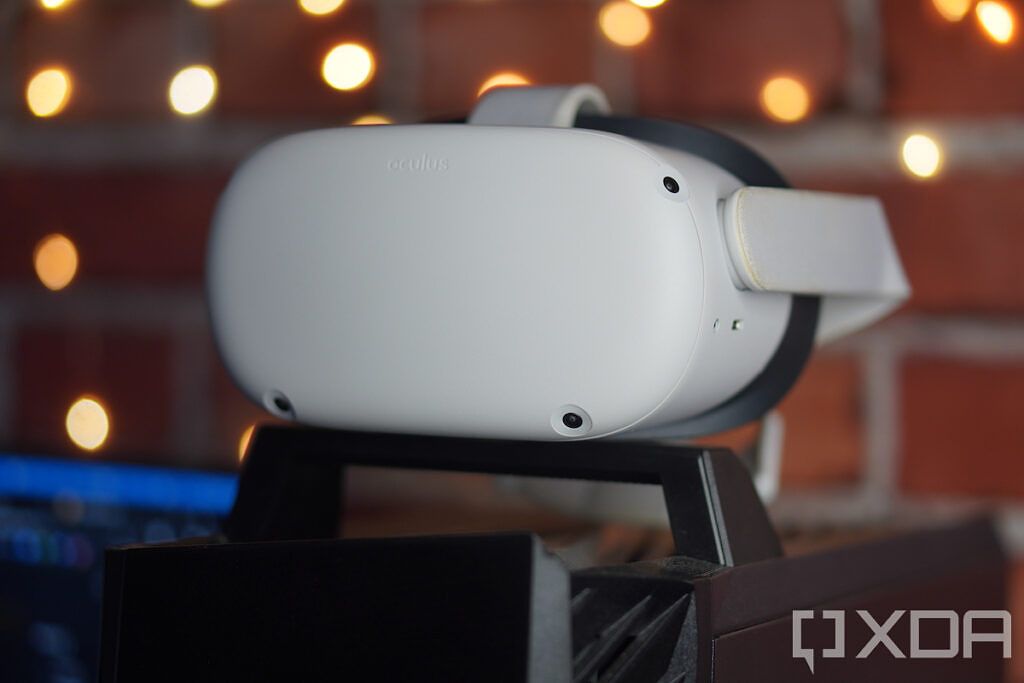Qualcomm has unveiled a quartet of chipsets: the Snapdragon 8 Gen 1, the Snapdragon G3x Gen 1, the Snapdragon Snapdragon 8cx Gen 3, and the Snapdragon 7c+ Gen 3. While it's technically not a new naming scheme if you've been following Qualcomm's computing endeavors, it's new to the vast majority of Qualcomm's userbase. While previous Qualcomm chipsets were generally linearly named, that wasn't always the case. It's confusing now, but this new naming scheme should hopefully simplify the process overall. The renaming of its other chips brings them in line with its overall focus and makes it easier to understand all of its chipsets as one cohesive ecosystem.
Qualcomm’s previous mobile SoC branding let buyers easily differentiate between a high-end Snapdragon SoC and a mid-range or entry-level SoC. However, differentiating between SoCs in the same series could prove to be a bit difficult for the average user. That’s because Qualcomm has switched up its naming convention a fair bit in the last few years and introduced a larger variety of products within each Snapdragon series.
Qualcomm makes a ton of different chipsets for a lot of different platforms, and that appears to be why "Snapdragon" has become the focus, rather than "Qualcomm Snapdragon". On top of the company's usual smartphone chipsets, there's also Snapdragon Wear for wearable devices, there's Snapdragon XR for Extended Reality devices, and there's even Snapdragon Ride for cars. Qualcomm appears to be moving towards dropping the "Qualcomm" part in a lot of its chipsets, opting instead to keep the "Snapdragon" name as the sole identifier of the brand.
If you're still confused about the names and branches, here's what Qualcomm's current Snapdragon lineup looks like.
Qualcomm Snapdragon 8 Gen 1
Qualcomm's new naming going forward keeps a hold of the "8" as a means of designating a flagship while dropping the arbitrary numbers at the end. Instead, we now have generations of "8" series chipsets, and the same should go for chipsets in a lower performance bracket. That means that we should presumably see a Qualcomm Snapdragon 7 Gen 1, Snapdragon 6 Gen 1, and a Snapdragon 4 Gen 1. That in itself is relatively easy to understand and makes sense, especially when compared to the previous system.
Under the previous system, it was generally presumed that a higher number meant a better chipset, but there were a few exceptions to this rule. The Snapdragon 480 5G, for example, was released only a month after the Qualcomm Snapdragon 678, yet had a higher clock speed and better GPU, among other improvements. Given that the new naming scheme will easily allow for Qualcomm to introduce some other marker of a chipset being a "lite" or "pro" version, it should alleviate some of that confusion. Admittedly, it's not impervious to its own pitfalls either, and may not completely solve that confusion between different chip lineups.
Is this the best way to name Qualcomm's chipsets going forward? There are probably shorter ways to refer to them, and even if Qualcomm hasn't officially named them that, it's likely the community will come up with its own nicknames for these chipsets, like "Snapdragon 8.1" for example, or "Snapdragon 8g1". Either way, it's just a chipset in your phone. Most consumers don't care about what the chipset is called, and if it solves some issues in inconsistent naming, then Qualcomm has achieved something in this rebranding. The chipset is a sum of multiple parts though, and Qualcomm has multiple other parts on the SoC.
Snapdragon 5G Modem-RF Systems - Snapdragon X65
Qualcomm hasn't changed its modem naming scheme for a long time, and the new Qualcomm modems are typically announced earlier in the year than the chipset that they will be integrated with. The company has kept the same X** naming scheme since it released its first 5G modem, the X50, incrementing it by five each time. These chips are also paired with mmWave modules, with the X65 being paired with the QTM545. These are incremented by 10, as the X60 (last year's 5G modem) was paired with the QTM535. To the best of our knowledge, this hasn't changed.
Qualcomm Snapdragon G3x Gen 1
This is where things get more confusing. The Snapdragon G3x Gen 1 is Qualcomm's gaming chipset at the heart of the handheld developer kit produced in tandem with Razer. I would say that personally, I believe the "G" stands for gaming. Gen 1 obviously refers to the generation of the chipset... but where does the "3" come from? We asked Qualcomm, and while confusing, we managed to make sense of what the company's intentions are. It's a tiered system that is half inspired by its computing division. We can expect to see the following chips:
- Snapdragon G1
- Snapdragon G2
- Snapdragon G3
- Snapdragon G3x
The Snapdragon G1 chip will be used for very basic capabilities, for example, streaming devices. The G2 is a more entry-level product, the G3 is more mainstream middle of the pack, and the G3x is a premium product. The "x", like in Qualcomm's computing divisions, stands for "eXtreme".
Qualcomm 8cx Gen 3, Snapdragon 7c+ Gen 3
This is Qualcomm's latest flagship chipset for the PC market. Typically, the "c" moniker denotes that this is a computing chipset, and the 8 designates it as a flagship. This is the third generation of the chipset, as Qualcomm has been running with this naming scheme in computing for quite a while now. It's a pretty easy system to understand, aside from the "x" denotation. The "x" actually means "eXtreme", and refers to it being the top-of-the-line chipset.
As for the Snapdragon 7c+ Gen 3, this is where things get a bit confusing. It's an entirely new chipset, despite what the "+" would have you believe. The Snapdragon 7c+ Gen 3 is a full redesign over its predecessor. The reason it’s called the 7c+ instead of the 7c is that the Snapdragon 7c Gen 2 is still going to be sold too, which further adds to the confusion. Generally though, the 7 series of these chipsets are more mid-range, and the plus would usually denote improvements over the regular, non-plus version. The marketing team definitely needs to sit and have a think about this.
Snapdragon Wear
Snapdragon Wear is the company's platform for chipsets aimed at wearable devices, such as the Snapdragon Wear 4100. These increment in the thousands, with the last generation being the Snapdragon Wear 3100. Not only that, but Qualcomm also uses the "+" to denote improvements over the original chipset, meaning that you can get a Snapdragon Wear 4100+ chipset, too. The naming scheme for these chipsets has been relatively stable over the past couple of years, though given that the naming scheme deviates from Qualcomm's mobile portfolio, it's possible that these may change in the future, too.
Snapdragon XR
XR means "eXtended Reality", and is typically used in virtual reality headsets. A prime example of this is the Oculus Quest 2, which packs in a Snapdragon XR2 chipset. These XR chipsets have a number of optimizations aimed solely at virtual reality, including multiple-camera processing support, high-accuracy motion tracking, 360° video support, and much more. These are typically based on mobile chipsets, and the original XR was based on the Snapdragon 835. The XR2 is based on the Snapdragon 865.
Snapdragon Ride
Qualcomm's Snapdragon Ride has also dropped the "Qualcomm" part of its name, though has retained the rest of its naming strategy. It still doesn't really match up with any other of its platforms directly in its naming, but it's a move away from including the "Qualcomm" part in the chipset name. These chipsets aren't immensely popular yet anyway, and will only be released in select cars from 2023.
Qualcomm's naming change is a welcome move, at least on the mobile side of it, as things were starting to get confusing and Qualcomm was running out of numbers within the series. But as you can see, there's still room for uniformity in how the entire Snapdragon branding could stand. Will such uniformity ever be achieved? That is something we cannot answer, and something that might not even be required since Qualcomm essentially serves as a B2B brand and does not directly sell any chip to an end-user. Still, cohesive branding indicates a vision for the future, and the branding does target end-consumers for goodwill and reputation building. So we'd love to see something even more consistent and easy to follow across the board.

